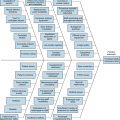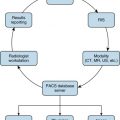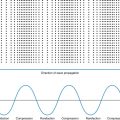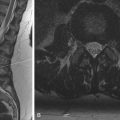Abstract
This chapter discusses the current and traditional definitions of quality in health care. Quality control, quality assurance, and quality improvement are described and compared. Quality improvement is related to value in health care. Common quality improvement techniques and their limitations are explored. Quality improvement metrics are reviewed. There is a discussion of the application of industrial quality management science to health care and a brief review of Lean/Six Sigma application to healthcare. The chapter concludes with a review of ACR 3.0.
Keywords
Continuous quality improvement (CQI), Imaging 3.0, IOM six aims, Lean/Six Sigma, medical errors, practice quality improvement (PQI), quality control, quality assurance, quality improvement, total quality management
Current and Traditional Definitions of Quality in Healthcare
How do we best define quality in healthcare? The quality literature includes several definitions. The Institute of Medicine (IOM) defines quality of care as the degree to which health services for individuals and populations increase the likelihood of desired health outcomes and are consistent with current professional knowledge. How care is administered should demonstrate appropriate use of the most current knowledge about scientific, clinical, technical, interpersonal, manual, cognitive, and organizational and management elements of healthcare. The Agency for Healthcare Research and Quality (AHRQ) defines quality healthcare as “doing the right thing for the right patient, at the right time, in the right way to achieve the best possible results.” The American College of Radiology (ACR) defines the quality of healthcare in radiology as “the degree to which health services for individuals and populations increase the likelihood of desired health outcomes and are consistent with current professional knowledge. Specifically with regard to diagnostic imaging and image-guided treatment, quality is the extent to which the right procedure is done in the right way, at the right time, and the correct interpretation is accurately and quickly communicated to the patient and referring physician. The goals are to maximize the likelihood of desired health outcomes and to satisfy the patient.”
The IOM offers six overarching characteristics of high-quality care ( Table 3.1 ), which have been widely adopted by other organizations active in improving the quality of healthcare. These are discussed in greater detail in Chapter 1 .
| Safe | Avoiding injuries to patients from the care that is intended to help them. |
| Effective | Providing services based on scientific knowledge to all who can benefit, and refraining from providing services to those not likely to benefit. |
| Patient centered | Providing care that is respectful of and responsive to the individual patient preferences, needs, and values, and ensuring that patient values guide all clinical decisions. |
| Timely | Reducing waits and sometimes harmful delays for those who receive and those who give care. |
| Efficient | Avoiding waste, including waste of equipment, supplies, ideas, and energy. |
| Equitable | Providing care that does not vary in quality because of personal characteristics such as gender, ethnicity, geographic location, and socioeconomic status. |
An important component of improving the quality of healthcare involves the reduction of both diagnostic and treatment errors. A significant stimulus to the current quality and safety movement in the United States was the IOM’s 1999 landmark monograph, To Err Is Human . This report stated that 44,000 to 98,000 deaths each year are a result of medical errors.
Other reports since then have also highlighted the need for quality improvement (QI) in healthcare, including Crossing the Quality Chasm and the National Healthcare Quality Report, published annually since 2003 by the AHRQ. Diagnostic error in medicine continues to be a major cause of patient harm, with the rate of missed, incorrect, or delayed diagnoses estimated to be as high as 10% to 15%. Two broad error categories in diagnostic radiology include perceptual errors and cognitive (interpretive) errors. Perceptual errors are far more frequent, accounting for 60% to 80% of radiologists’ errors. This topic is further discussed in Chapter 14 of this book.
An important consideration in healthcare quality is the appropriate use of available resources. Inappropriate use of resources can be further classified as underuse, overuse, or misuse. Underuse is prevalent, and many evidence-based recommendations are not used as often as recommended. As an example, although biannual screening in women age 50 to 75 years has been proven to be beneficial, less than 75% of women in this age group report obtaining a mammogram in the previous 2 years. Overuse occurs when testing and treatments are used to a greater extent than the available clinical evidence supports. Overuse, by this definition, contributes significantly to current healthcare costs. An example of overuse is obtaining a magnetic resonance imaging (MRI) scan of the lumbar spine for acute uncomplicated low back pain or radiculopathy. The ACR Appropriateness Criteria rates MRI in this example as “usually not appropriate.” Misuse involves using the wrong resource. An example of misuse is a physician ordering a radiograph of the skull after an acute closed head injury rather than the clinically indicated head computed tomography exam.
Quality Control, Quality Assurance, and Quality Improvement
Quality control (QC) is defined as “a management process where actual performance is measured against expected performance, and actions are taken on the difference.” QC in the industrial or healthcare setting establishes ranges of acceptability for specific measures or data points. Action is taken when a measurement falls outside the acceptable range. QC sets the baseline for a minimal level of quality. Efforts must be made to reduce variation as much as possible. Examples of QC include the regular, intermittent testing of medical equipment, the measurement of radiation dosage, or the evaluation of image quality. The radiologist practicing QC may request a repeat chest radiograph if the lung apices are excluded. QC establishes the range of acceptability including the accuracy, which refers to the proximity of a measurement to the true value; the precision, which refers to the reproducibility of a measurement; and the reliability, which refers to the accuracy and precision of a measurement. QC is a process by which we review the quality of all factors involved in producing an item.
Quality assurance (QA) is a comprehensive quality management program used to ensure healthcare excellence through the systematic collection and evaluation of data. QA involves focusing on specific indicators that are believed to affect the quality of services. Key performance indicators (KPIs) are measures that are used to evaluate the health of an organization and define and quantitatively measure progress toward the organization’s goals. In diagnostic imaging, performance indicators may include access to services, utilization appropriateness, timeliness of scheduling, waiting times, patient safety, or image modality and protocol selection. QA includes all activities related to proper operational and strategic planning, preassessment, and self-evaluation. QA involves compliance with specifications, requirements, or standards and implementing methods for conformance. QA has lost its earlier popularity because it may be interpreted as reactive, retrospective, and policing and could result in disciplinary means. QA often involved determining who was at fault after something went wrong. QA is an older term not frequently used today.
Quality improvement (QI), sometimes called continuous quality improvement or total quality management, is defined as an ongoing, organization-wide framework in which employees are committed to and involved in monitoring and evaluating all aspects of an organization’s activities including inputs, processes, and outputs to continuously improve them. QI is a holistic approach focusing on the entire system to provide services that meet or exceed the patient’s or referring clinician’s expectations. A QI program should have a clear idea of patient needs, be familiar with all the individual steps in a system, understand potential sources of variability in the system, encourage teamwork, embrace experimentation, and implement ideas for process improvement. In radiology, QI dictates that all activities in an imaging facility be identified and that clear standards (performance indicators) be set and measured to allow processes to be improved continuously. Process QI activities involve a retrospective and prospective evaluation of the system to identify unacceptable variability or occurrence of defects and encourage experimenting with methods to minimize the variability and eliminate defects. The steps in a process may be mapped with a simple flow chart and the Plan-Do-Study-Act (PDSA) cycle can be used for the QI process.
A few valuable QI tools include the “5 Whys,” the histogram, the flowchart, cause-and-effect diagrams (fishbone or Ishikawa diagrams), Pareto charts, run charts, control charts (Shewhart charts), and the PDSA cycle (Shewhart cycle, Deming cycle). These topics are discussed in greater detail in Chapter 4 .
Practice quality improvement (PQI) is a QI project or activity undertaken at least once per 3-year period to satisfy the American Board of Radiology (ABR) Maintenance of Certification (MOC) Part 4 requirements. A PQI activity involves the continuous engagement of healthcare professionals in efforts expected to lead to better health outcomes for patients and better system performance with the desired outcome of improved patient care and/or enhanced professional development. PQI projects use any standard QI methodology, such as the PDSA cycle approach. An individual radiologist, a group practice, a department at a healthcare or academic institution, a healthcare system, or a society at the local, regional, or national level may develop a PQI project.
Stay updated, free articles. Join our Telegram channel

Full access? Get Clinical Tree








